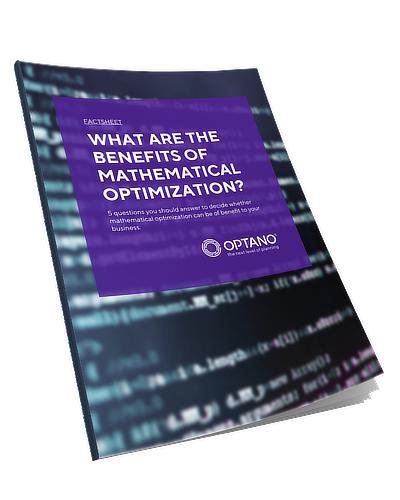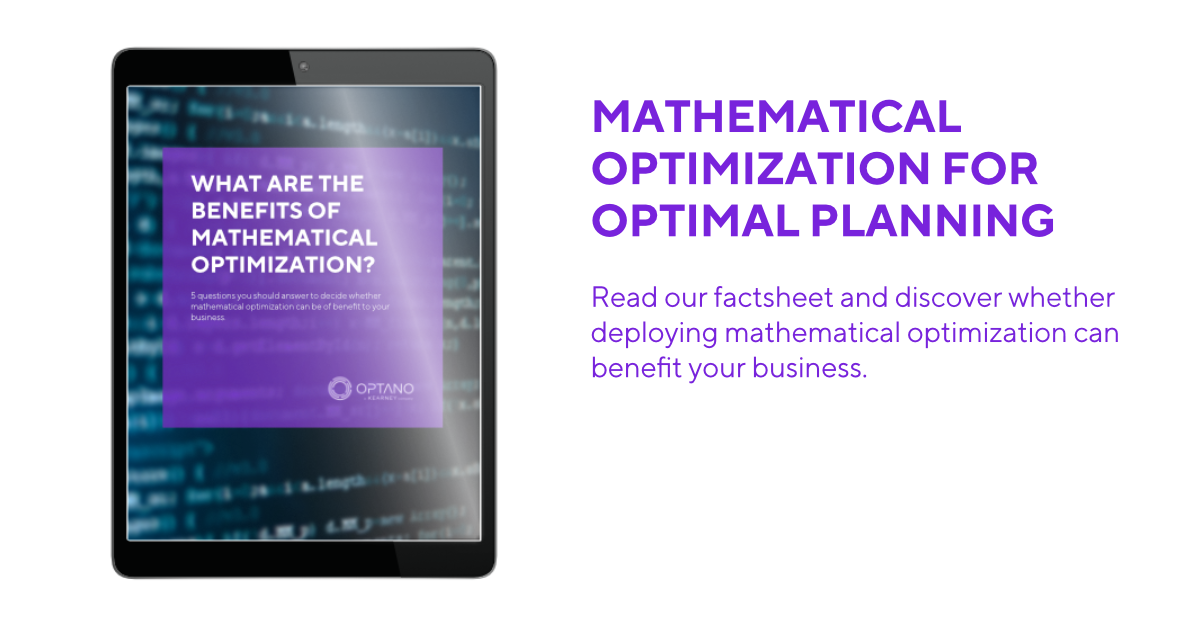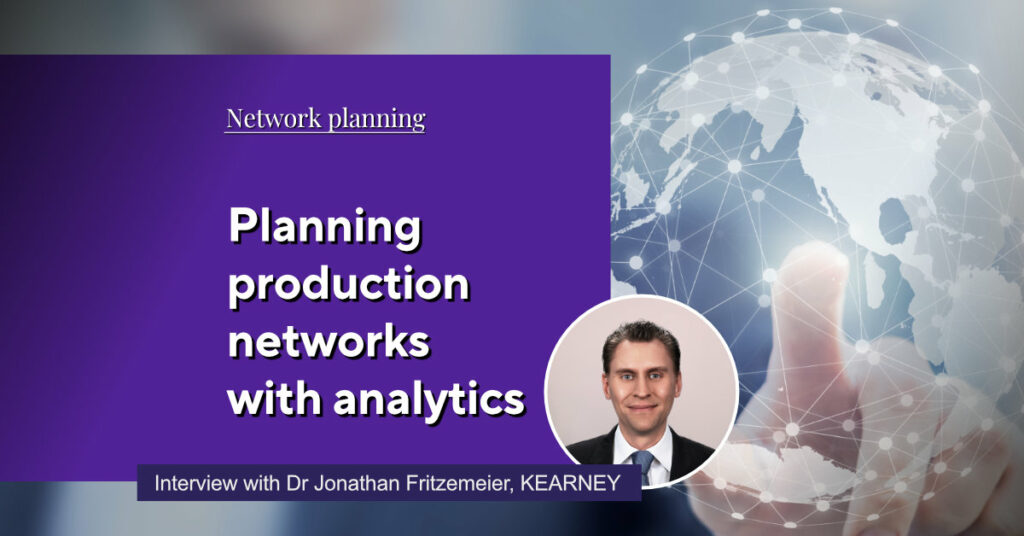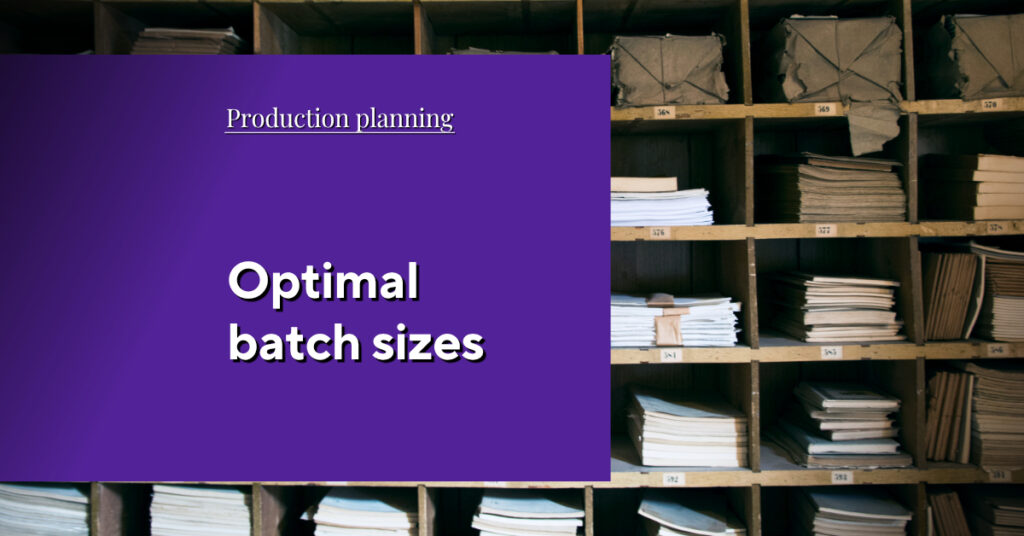Expect the
unexpected
When I was a young Girl Guide in the UK, we always had to carry five essential items with us: a notebook, a pencil (always sharpened), a coin for the payphone, a piece of string and a safety pin.
“Always be prepared!” was the motto. In other words – expect the unexpected! While I am still not really sure exactly which purpose the piece of string had (never mind always wondering just how long a piece of string had to be), these five items always gave me the comforting feeling that I was prepared for any unexpected event that came my way!
Mathematical optimization enables you to manage an uncertain future
However, as logical and intuitive “expect the unexpected” may sound, it is seldom put into practice in the business world. This is because the exact opposite is the case in many companies’ planning processes: these plan with the expected in mind, i.e. they plan on past experience, using historical data as a basis. However, in the light of entirely unexpected events over the last couple of years (the COVID-19 pandemic, among others), it seems as if those days are over and businesses are now looking at ways to expect and plan for the unexpected.
Even the most sophisticated technologies such as AI or Machine Learning are not in a position to ward off disruption. The problem isn’t the technology itself but the data with which it works as this often consists of historical values. However, it is in the nature of disruption to radically break with the past so historical data is unsuitable for predicting an uncertain future.
If historical data is no longer sufficient to predict the future, then this is where mathematical optimization comes in. Why? It enables you to create a model of your business in which all the relevant parameters are mapped. Each change, no matter how large or short-term it may be, can be simulated and integrated into the planning process. The result is always an optimal target achievement which considers all the given circumstances. How does this work? Let us explain the three core components step by step:
More interesting articles
1) The optimization model: A complex reality becomes mathematics
The first and most important step is to capture your company, along with all of its relevant data and dependencies, in a mathematical model. This procedure is frequently labelled as “the digital twin”. The term is misleading insofar as it implies that the entire venture will be modeled when the only part that actually will be is the one considered relevant for a specific optimization issue. Otherwise, the model would not only be unnecessarily complex but its calculation would take far too long in practice. The optimization targets, on the other hand, are important. These are often maximization or minimization targets (for example, maximizing profitability or minimizing manufacturing costs). The optimization can be geared towards several targets. These are prioritized and weighed up among each other. In this way, it is possible to align competing objectives.
But, one thing at a time. A mathematical model consists of:
- Decision variables
These are decisions which need to be made during the course of the planning process. Let us take a fictional example from the area of production planning: here you have to make decisions on manufacturing workflows, decisions regarding machine scheduling, decisions on personnel costs and so on. - Parameters
Parameters limit your scope for action. In our example these could be aspects such as maximum stock, maximum warehouse capacity, maximum machine capacity, maximum employee capacity, maximum throughput times, etc. - Optimization targets
Targets determine how the mathematical model is to work. Here the target could be: maximum machine capacity while attaining maximum profitability.
Based on these requirements the model in our example calculates a production plan which has the machines running at full capacity, prioritizes products with as large a contribution margin as possible, avoids special bonuses and shift bonuses and maximizes throughput. Of course, this is a very basic example yet it shows fairly clearly how the mathematical optimization model works.
2)The Algorithm: The optimization model in use
Having a mathematical model certainly does not solve an optimization problem just yet. To do this, it needs highly sophisticated software. This is what brings the mathematical model to life. For the user it is also an interface which makes it possible to work regularly with data and optimization processes in the first place.
3.) The Solver: Calculating power for the algorithm
In order to use the mathematical model which has been integrated into the algorithm, we need special solvers. These process the data and make the algorithms applicable. They go through an inconceivably large amount of potential decisions and calculate possible solutions for the optimization problem along all the framework parameters. While doing so they continuously compare the results until an optimal solution has been found. Solvers are available from several providers which offer both commercial and free licenses.

Are you interested in our factsheet?
What are the benefits of mathematical optimization?
Using mathematical optimization to prevent disruption
Mathematical optimization offers an unbeatable advantage for your business and can help you to plan for such situations. An optimization application such as OPTANO – now with a Predictive Blueprint – is a powerful mathematical optimization tool that can find solutions to your most complex planning problems and support you in your decision-making processes. It is highly customized to suit your specific requirements, such as the optimization of your supply chain or production plans, even your entire network. OPTANO makes all your planning processes efficient, fast and flexible so that disruptions in the future no longer hit you unaware.
Expect the unexpected - with just one essential item
Of course, not a single business can prepare for the unexpected with the five essential items I was required to have as a Girl Guide. An optimization platform such as OPTANO is the only essential item required to help a business plan with confidence, although it probably wouldn’t do any harm to have a notebook and pencil nearby.
And as for that piece of string… to this day I am still not sure what purpose it was meant to serve. If you have the answer, then let me know.
Have you got our factsheet on this topic yet?

In our factsheet “What are the benefits of mathematical optimization?” we ask 5 questions to help you assess whether mathematical optimization brings benefits to your organization.
To obtain our factsheet, all you need to do is enter your contact details in the space below. A pop-up window will then open to download the whitepaper. Please note that by providing us with your email address, you agree that we may contact you on this topic. You may revoke this agreement at any time by contacting [email protected].







